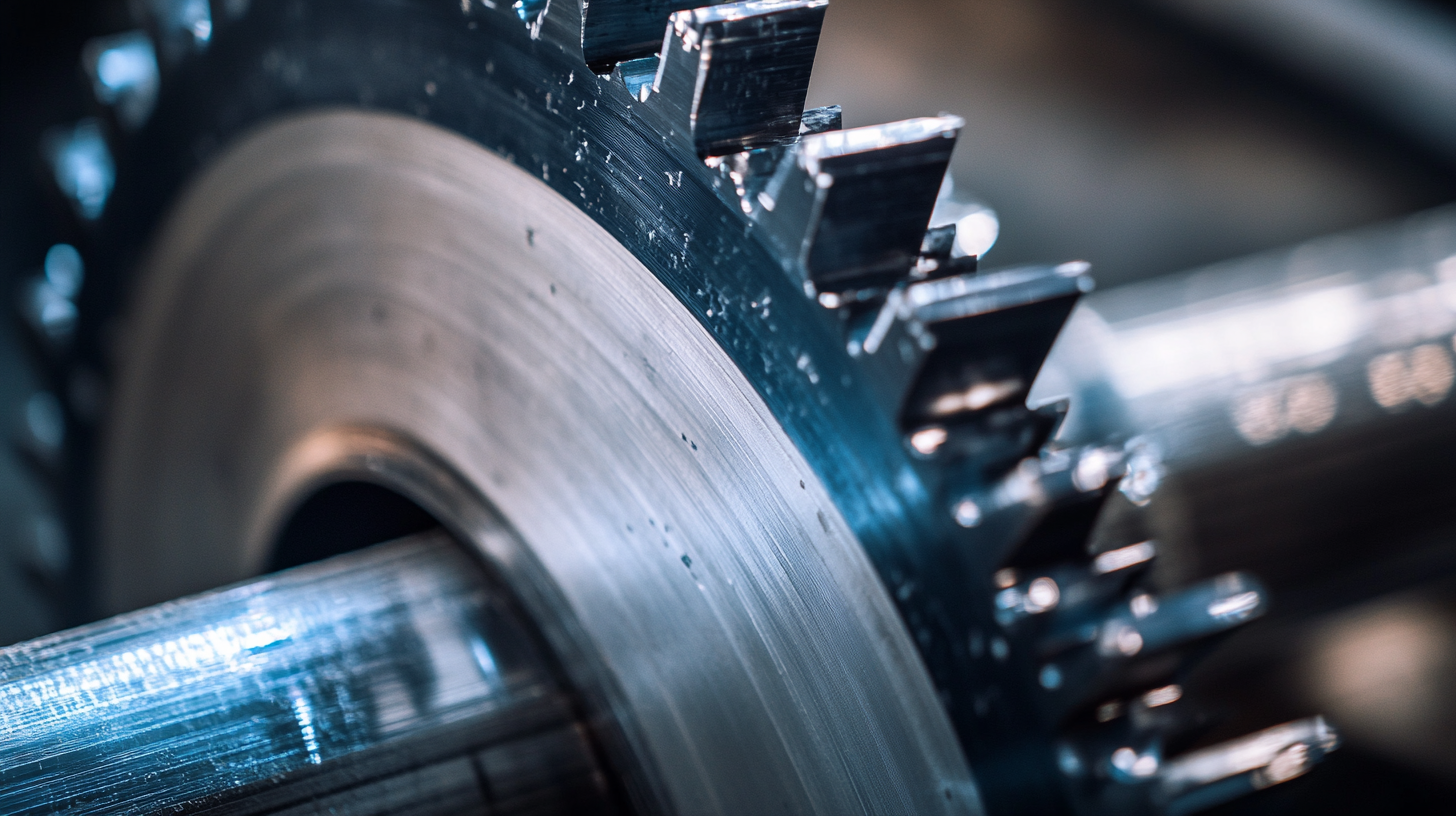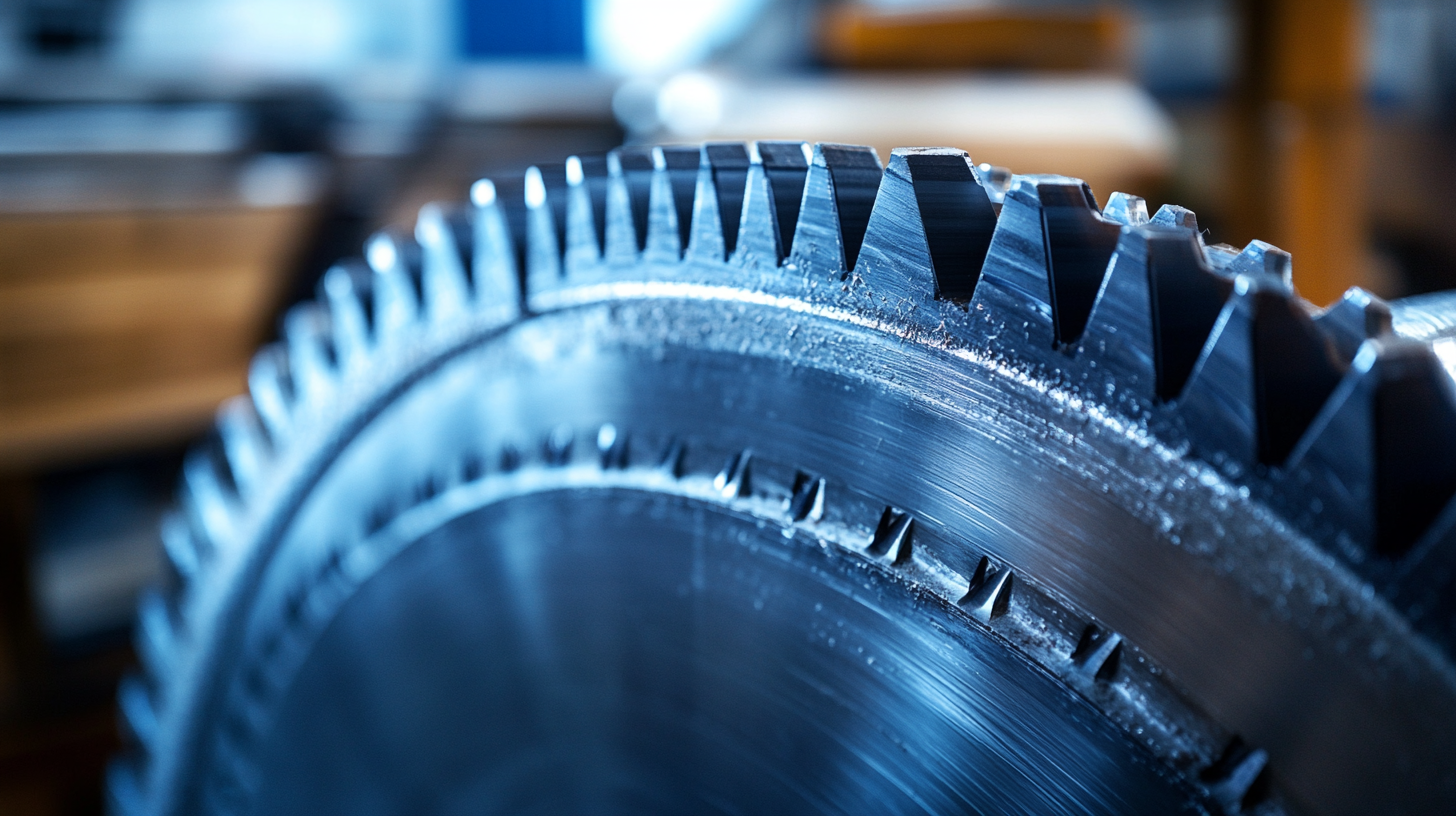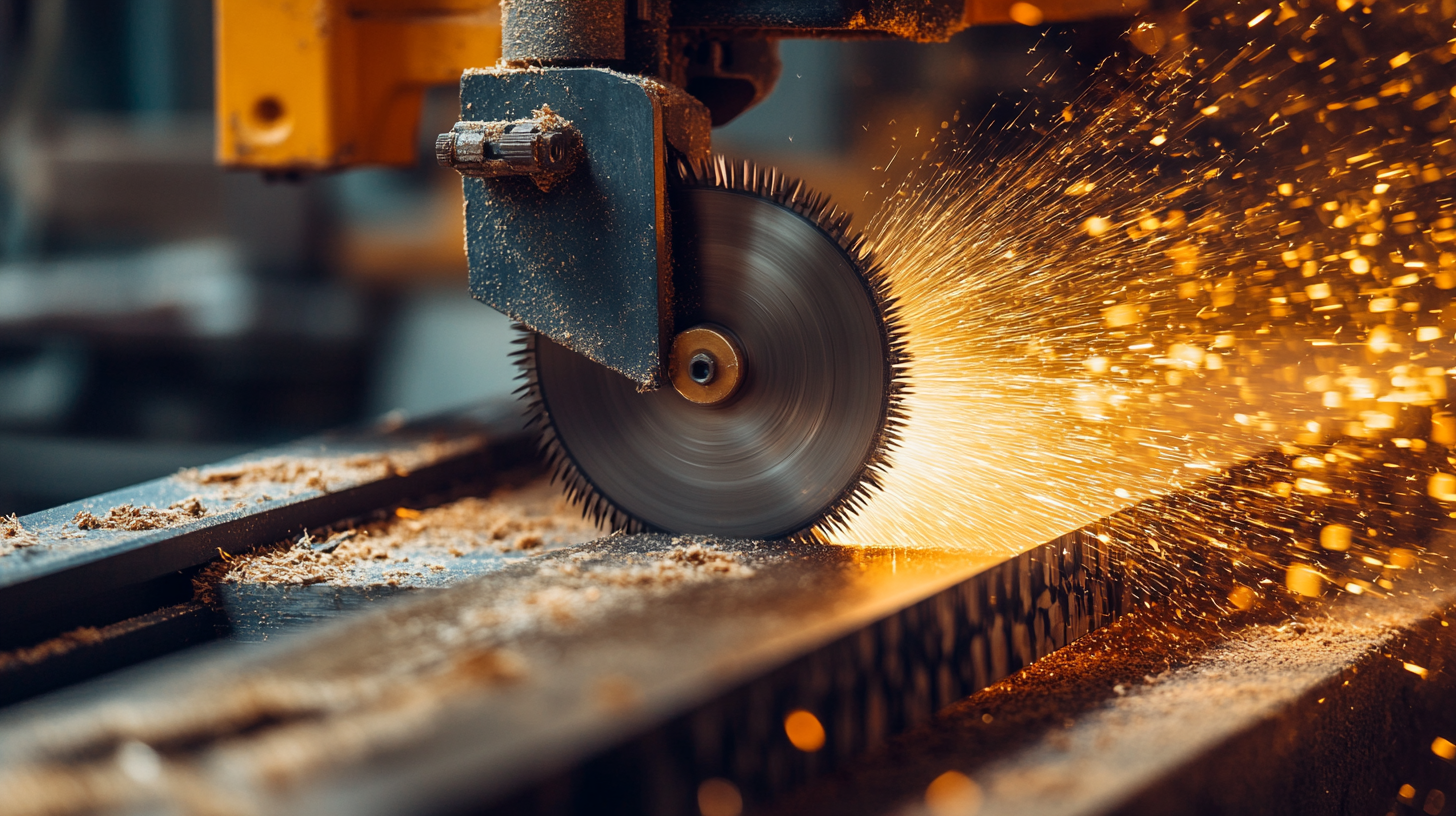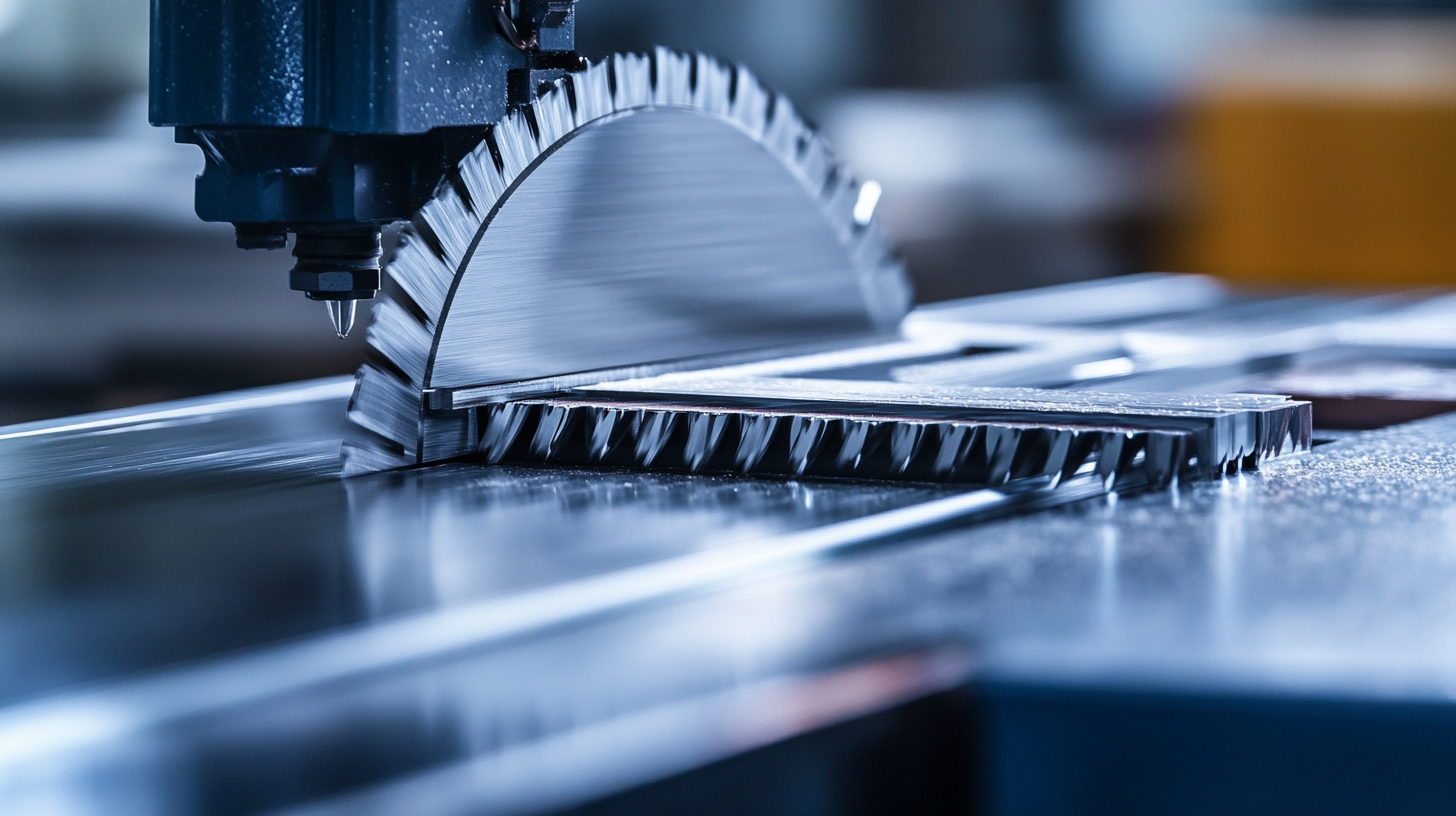The Definitive Resource for Sourcing High-Performance Air Saw Blades: Insights and Trends
In the ever-evolving landscape of manufacturing and construction, the significance of using high-performance tools cannot be overstated. Among these tools, Air Saw Blades have emerged as essential components for precision cutting applications. These specialized blades not only enhance operational efficiency but also contribute to the overall quality of the finished product. As industries strive for higher productivity and superior results, staying informed about the latest trends and insights in Air Saw Blade technology becomes crucial for professionals seeking to gain a competitive edge.
This blog aims to serve as the definitive resource for sourcing high-performance Air Saw Blades, delving into the innovations, materials, and applications that define the market today. We will explore the various features that distinguish premium blades from their standard counterparts, as well as emerging trends that are shaping the future of cutting technologies. Whether you are a seasoned engineer or a procurement specialist, understanding these insights will empower you to make informed decisions that enhance your operational capabilities and drive success in your projects.

Key Features to Consider When Choosing Air Saw Blades
When selecting high-performance air saw blades, several key features must be taken into consideration to ensure optimal performance and efficiency. One of the most critical aspects is the blade material. High-speed steel and carbide-tipped blades are popular choices due to their durability and ability to maintain sharpness over time. Users should also consider the thickness and width of the blades, as these factors can significantly impact the cutting capability and precision required for specific tasks. Another essential feature is the tooth design of the air saw blades. Different applications may require varying tooth counts and shapes to achieve the best results. For instance, blades designed for cutting metals will have a different configuration compared to those meant for composite materials. Furthermore, understanding the compatibility of the blades with your air saw model is crucial to maximize performance and avoid equipment damage. Lastly, don't overlook the importance of brand reputation and user reviews. Opt for well-established brands known for producing reliable air saw blades, as this can provide insight into quality and performance longevity. By carefully considering these features, users can make informed decisions when sourcing air saw blades that meet their specific needs and ensure high performance in their projects.

Top Materials Used in High-Performance Air Saw Blade Manufacturing
The manufacturing of high-performance air saw blades is increasingly reliant on advanced materials designed to enhance durability and cutting efficiency. In recent years, the industry has seen a shift towards utilizing high-performance bio-based composite materials, similar to those being developed in the EU-funded Blade2Circ project for wind turbine blades. This movement reflects a broader trend of prioritizing sustainability alongside performance, which is echoed by a growing number of manufacturers aiming to produce eco-friendly products without compromising quality.
One of the key materials in high-performance air saw blade production is tungsten carbide, known for its exceptional hardness and wear resistance. Recent findings indicate that blades incorporating tungsten carbide can improve cutting speeds by up to 30%, making them invaluable for industries requiring precision and efficiency, such as automotive and aerospace manufacturing. Moreover, innovative manufacturing practices, such as additive manufacturing employed by Siemens for gas turbine blades, are revolutionizing how these materials are processed, allowing for better performance characteristics and reduced waste.
Additionally, the integration of advanced manufacturing techniques like blade coating and slot-die coating, used for fabricating flexible perovskite solar cells, is paving the way for enhanced production methodologies within the air saw blade industry. These techniques not only improve the surface quality of the blades but also facilitate the incorporation of advanced material composites that broaden the functional capabilities of air saws across various applications. As the demand for high-performance tools continues to grow, the evolution of materials and manufacturing practices will play a crucial role in shaping the future of this sector.

Emerging Trends in Air Saw Blade Technology
In recent years, air saw blade technology has seen significant advancements, driven by the need for more efficient and precise cutting solutions in various industries. One emerging trend is the integration of advanced materials into blade fabrication. Manufacturers are experimenting with high-strength alloys and carbide-tipped edges, which enhance durability and allow for cleaner cuts even through tough materials. This shift not only extends the lifespan of the blades but also reduces the frequency of replacements, offering long-term cost savings for users.
Another noteworthy trend is the increasing focus on ergonomic design and user comfort. As air saws are widely used in manufacturing and fabrication environments, the emphasis on reducing operator fatigue and improving handling has led to innovations in blade design. Features such as lightweight structures and optimized grip shapes are being incorporated, allowing for more extended use without compromising performance. This is particularly beneficial for workers who rely on precision and ease of operation throughout their shifts.
Moreover, the rise of automation in manufacturing processes is influencing air saw blade technology. With the integration of CNC machinery and robotics, there is a growing demand for blades that can seamlessly interact with automated systems. Manufacturers are now designing blades that can operate under varying conditions, ensuring consistency in quality and performance across different applications. This adaptability not only improves production efficiency but also positions companies at the forefront of technological advancement in their sectors.

Best Practices for Maintaining Air Saw Blades for Longevity
When it comes to ensuring the longevity and optimal performance of air saw blades, proper maintenance is crucial. According to a study by the Manufacturing Institute, over 30% of tool failure in industrial settings can be traced back to inadequate maintenance practices. Regular inspection and cleaning of air saw blades can significantly extend their life, maximizing the investment in these essential tools.
One of the best practices in maintaining air saw blades is to frequently check for blade wear and damage. The National Tooling and Machining Association reports that proactive inspection can reduce unexpected downtime by up to 25%. Operators should visually inspect blades for signs of chipping or overheating, which can indicate that they need replacement or sharpening. Additionally, maintaining a clean cutting environment helps prevent debris buildup that could adversely affect blade performance.
Lubrication is another key aspect often overlooked in blade maintenance. Utilizing the right lubricants not only enhances cutting efficiency but also minimizes wear and tear on the blades. According to a recent report from the Association for Manufacturing Technology, proper lubrication can increase tool lifespan by as much as 20%. Operators should refer to manufacturer guidelines for recommended lubricants and application frequency, ensuring consistent and effective maintenance practices.
Comparative Analysis of Leading Air Saw Blade Brands and Products
When evaluating the landscape of air saw blades, it becomes imperative to conduct a comparative analysis of leading brands and their offerings. The air saw blade market is projected to grow at a CAGR of 5.2% from 2023 to 2028, according to a recent report by Market Research Future. This growth is driven by advancements in manufacturing technologies and a rising demand for precision cutting tools in various sectors, including metalworking and construction.
Brands like Ingersoll Rand, Chicago Pneumatic, and Pegasus dominate the market with their robust product lines. Ingersoll Rand's air saw blades, known for their durability and sharpness, utilize a unique bi-metal construction that enhances performance. In contrast, Chicago Pneumatic offers a range of blades designed specifically for cutting through various materials, which appeals to a broader audience. A study by Technavio noted that customer satisfaction for Chicago Pneumatic's products is consistently rated highly due to their reliability under heavy use.
Pegasus, while newer to the market, focuses on innovation, launching blades that feature specialized coatings to minimize friction and heat build-up. According to a report by Grand View Research, these advancements have resulted in a 15% increase in cutting efficiency compared to traditional blades. As manufacturers continue to refine their designs and materials, the air saw blade market will undoubtedly continue to evolve, presenting consumers with increasingly versatile and high-performance options.
